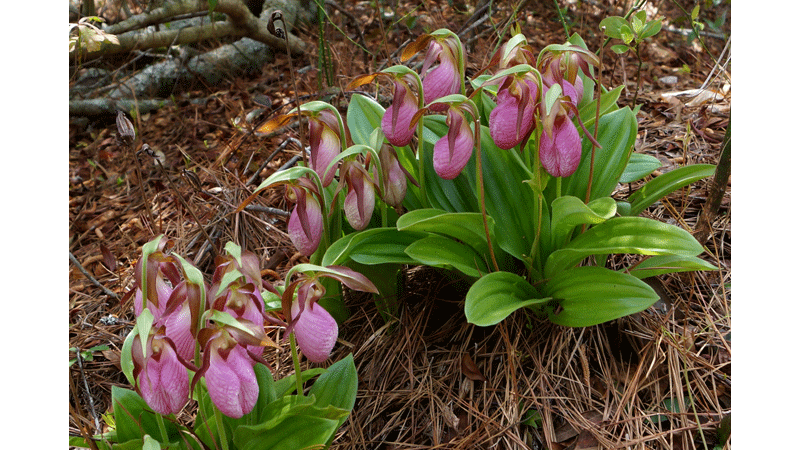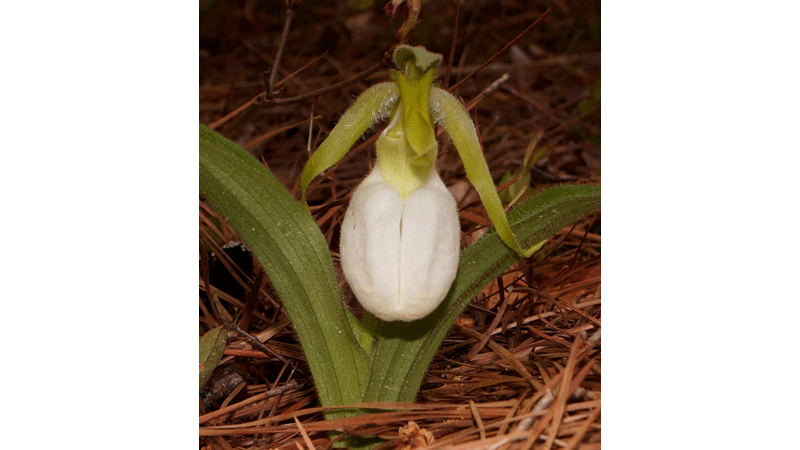Pink Lady’s Slippers
Published 6:25 pm Wednesday, May 18, 2022
|
Getting your Trinity Audio player ready...
|
By John Bunch
Master Naturalist
It’s rare to talk with an adult in our area who doesn’t have a fond memory of the Pink Lady’s Slipper orchids that grow here. Such a beauty in the spring. With all the logging and development these days, you just don’t see them as often as you used to. But when you do see one, it stops you in your tracks.
These orchids have a dependence on a certain soil fungus and cannot live without it. That dependence is a symbiotic relationship in which the fungus provides the Lady’s Slippers with nutrients. I’ve heard stories of people trying to transplant them and this is why they have failure. These plants should be given respect and left where they’re found. Please do not dig them up.
A couple of years ago, a Department of Conservation and Recreation (DCR) botanist friend told me that if I ever see a white one to let him know. I had never heard of such so I kept my eyes and ears open to the possibility of finding one. Well as it so happened, a like-minded conservationist friend of mine sent a picture to me last fall of a white Lady’s Slipper on her property. Well, that was exciting to see, that there happened to be one growing close-by. So, I’ve been trying to wait patiently all this time to hopefully get to see that plant. Was that plant still alive? Would that bloom return?
Well blooming time has finally arrived and I recently received word that indeed it had returned. I didn’t hesitate to arrange a visit to go to see it. The distance from her house to the plant was only a short walk and as we got closer, it didn’t take me long to spot it. It shown like a little beacon. After I took my photos, my friend then said, “Oh you should see these plants over here.” So I walked about 50 feet and there tucked away behind by some shrubbery and small trees were two large clumps of the pinks. I counted 18 flowers in those two clumps. What a sight! So spectacular. You just don’t see the plants growing like these were. Generally these orchids grow as isolated single plants dotted around in the forest.
So it you’re out and in a pine forest where it’s fairly dry, keep on the lookout for these pink colored treasures. Who knows, you might even run across a white one.
If you are a person with a disability and require any assistive devices, services, or other accommodations to participate in this activity, please contact the Isle of Wight Extension Office at 757-365-6261 during the hours of 8:30 a.m. and 5 p.m. to discuss accommodations five days before the event. *TDD number is (800) 828-1120.
Virginia Cooperative Extension programs and employment are open to all, regardless of age, color, disability, gender, gender identity, gender expression, national origin, political affiliation, race, religion, sexual orientation, genetic information, veteran status, or any other basis protected by law. An equal opportunity/affirmative action employer. Issued in furtherance of Cooperative Extension work, Virginia Polytechnic Institute and State University, Virginia State University and the U.S. Department of Agriculture cooperating. Edwin J. Jones, Director, Virginia Cooperative Extension, Virginia Tech, Blacksburg; M. Ray McKinnie, Administrator, 1890 Extension Program, Virginia State University, Petersburg







